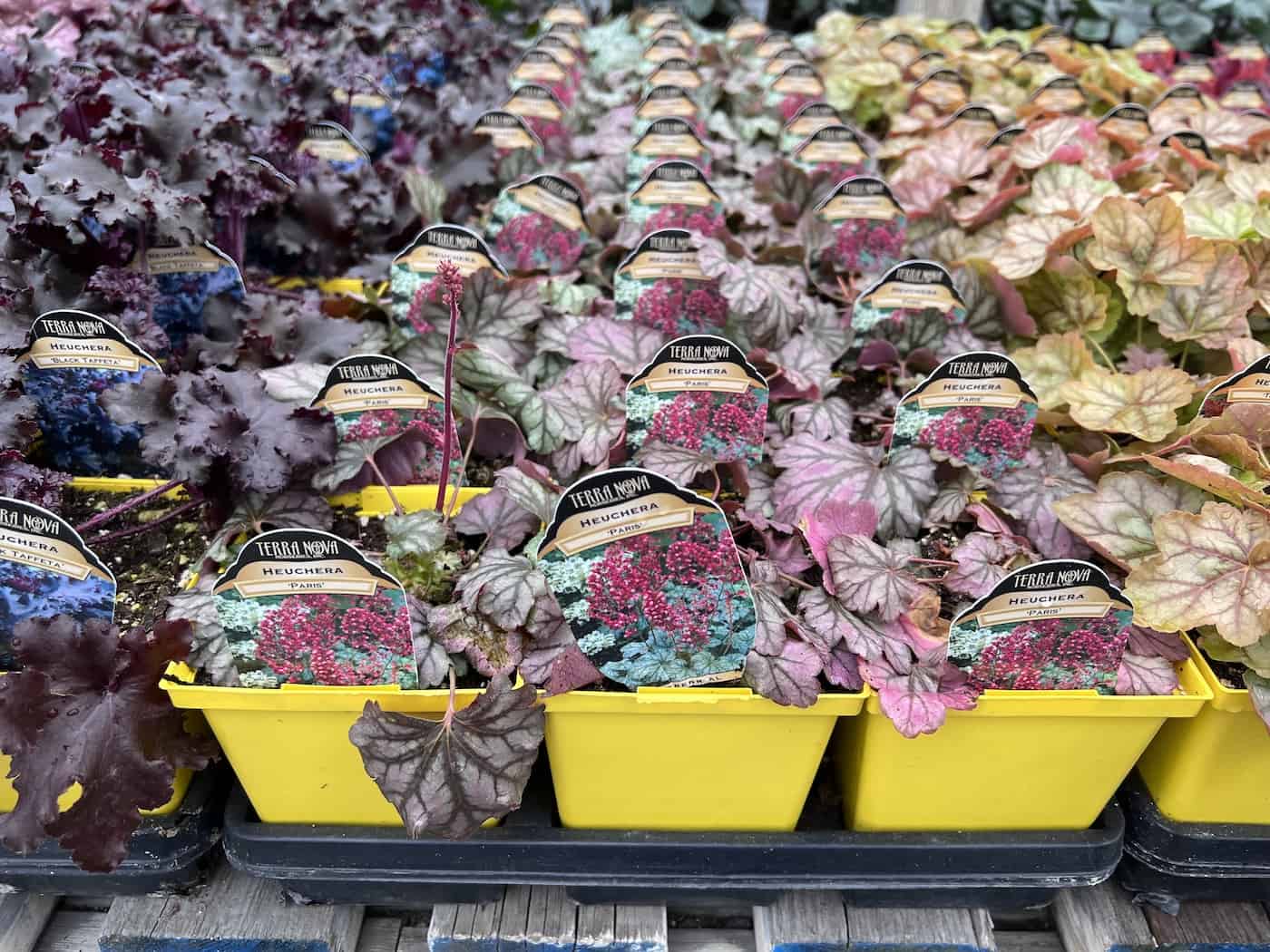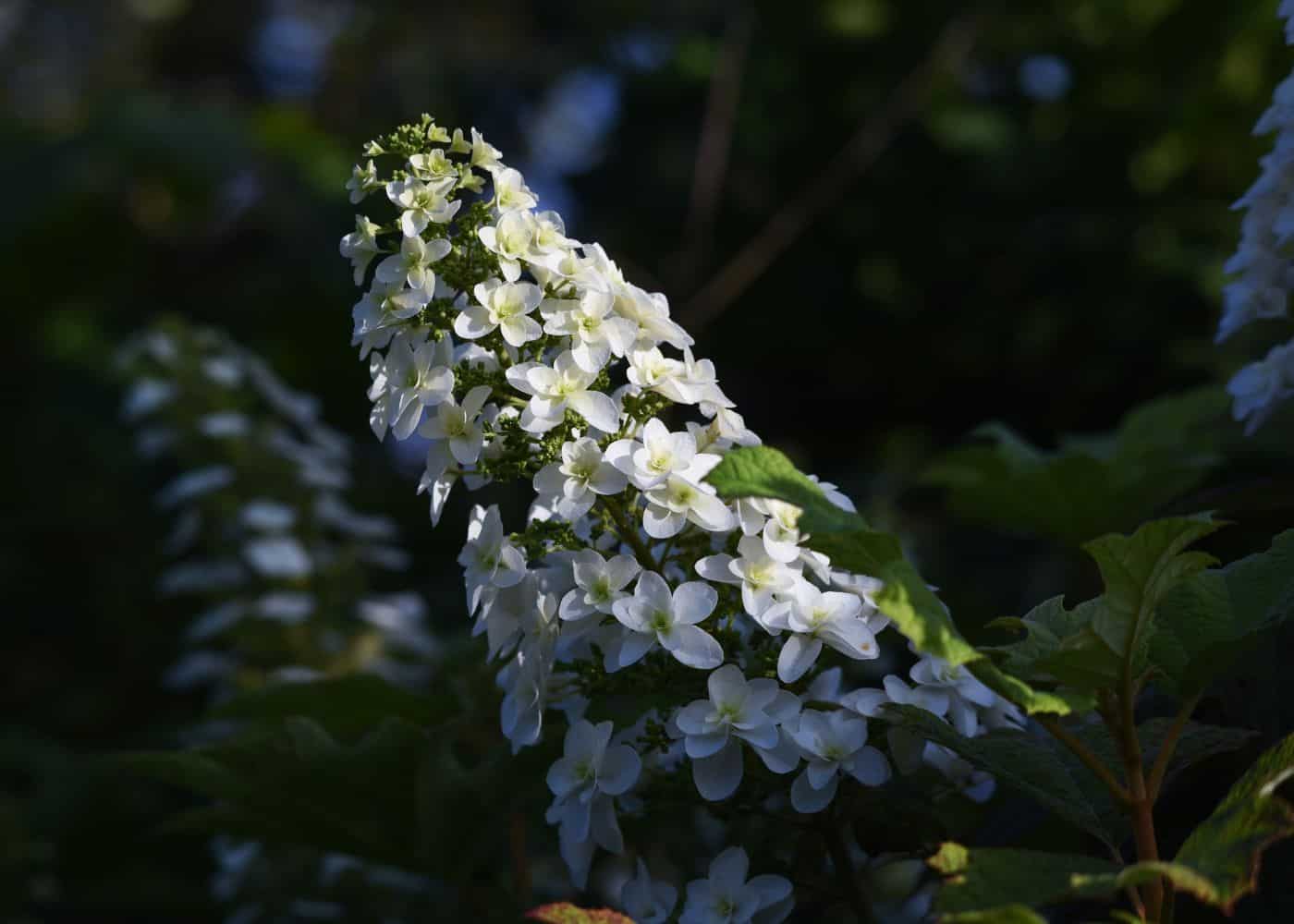Start by choosing large permanent companion plants to plant with your oakleaf hydrangea, including shade trees for the area and hedge plants to define the space and/or evergreens for winter interest. You can also mix in smaller shrubs to add texture and fall color and low-maintenance ornamental grasses for some elegant movement among the flower clusters.
Once the larger plants are in, add some flowering perennials for color and to attract pollinators. Consider some low-growing plants that are prized for their ornamental foliage to act as a living groundcover.

What to plant with oakleaf hydrangea
With oakleaf hydrangea (Hydrangea quercifolia), you can create a beautiful garden with minimal effort. Planting companion plants alongside the shrub will help it to thrive and add texture and color to your landscape.
Consider perennials such as hostas, coral bells/heucheras, or ferns for foliage interest; colorful annuals like impatiens or petunias for flowers; ornamental grasses for structure; or evergreens like boxwood if you’re looking for something more permanent.
Companion plants for oakleaf hydrangea
Many perennials are a great choice for companion plants to oakleaf hydrangea. Coneflower (Echinacea) is an easy-to-grow perennial that blooms in late summer and fall with bright pink, orange, or yellow flowers. Black-eyed Susan (Rudbeckia) is another popular option that produces daisy-like flowers in shades of yellow, gold, and bronze throughout summer. Coreopsis is also a good choice as it has a long flowering season, with its golden yellow blooms lasting from early spring until frost.
Ornamental grasses can add texture and movement to your garden while providing habitat for beneficial insects like butterflies and bees. Feather feed grass (Calamagrostis) grows tall with feathery plumes that sway gracefully in the breeze. blue fescue (Festuca glauca) has tufts of silvery blue foliage that looks beautiful when planted in masses or dotted around other perennials for contrast. tufted hairgrass (Deschampsia cespitosa) forms dense clumps of arching green blades, which look especially striking when backlit by the sun’s rays at dawn or dusk.
Oakleaf Hydrangeas look stunning when planted near feature trees such as Japanese maple (Acer palmatum), dogwood tree (Cornus florida), or redbud tree (Cercis canadensis). For shade-loving companions, consider American beech (Fagus grandifolia), white ash (Fraxinus americana), or tulip poplar (Liriodendron tulipifera).
Other shrubs and hedge plants suitable for oakleaf hydrangeas include barberry bush (Berberis thunbergii), dwarf burning bush (Euonymus Alatus Compactus ), and boxwood shrub (Buxus species).
Feature trees for hydrangea gardens
Japanese maples are great for adding interest and color to your garden. These trees come in various shapes, sizes, and colors that will complement the bright blooms of oakleaf hydrangeas. They prefer partial shade in most climates and moist soil conditions, making them an ideal companion plant for hydrangeas. When planting a Japanese maple near your hydrangea bush, be sure to give it plenty of room to grow, so its roots don’t compete too much with those of the hydrangea.
Dogwoods are another popular feature tree that pairs well with oakleaf hydrangeas. These trees have beautiful white or pink flowers in springtime, followed by clusters of red berries in the summertime that attract birds and other wildlife into your garden. Dogwoods thrive best when planted in full sun or partial shade with moist soil conditions similar to those preferred by oakleaf hydrangeas. Planting one near your shrub will add visual interest and provide additional habitat for wildlife visitors throughout the year!
Redbud trees are small deciduous trees native to North America that produce stunning purple-pink flowers each spring before their leaves emerge from dormancy. The heart-shaped foliage is also attractive during summer months when it turns greenish-yellow before falling off again in autumn time. Redbuds require full sun exposure but can tolerate some light shade if necessary, making them an excellent companion plant for hydrangeas which prefer dappled sunlight throughout the day.
Shade trees for hydrangea gardens
Shade trees are a great way to provide the perfect amount of shade for your oakleaf hydrangeas. American beech tree (Fagus grandifolia) is an excellent choice as it grows in most parts of North America and provides dense, dark green foliage that will help keep your garden cool during hot summer days.
The white ash tree (Fraxinus americana) is another good option, with its attractive bark and bright yellow-green leaves that turn golden yellow in fall. Finally, the tulip poplar tree (Liriodendron tulipifera) offers beautiful blooms in springtime and can reach heights up to 80 feet tall!
In addition to these larger trees, you may also want to consider adding some smaller shrubs or hedges for extra protection from the sun’s rays. Barberry bush (Berberis thunbergii), dwarf burning bush (Euonymus alatus compactus), and boxwood shrub (Buxus) all make great companion plants for oakleaf hydrangeas as they thrive in similar soil conditions and climate ranges. Planting them around your hydrangeas will create a lush environment where both plants can flourish without competing for resources like sunlight or water.
No matter which type of shade tree or shrub you choose, proper care is essential if you want them to last through multiple seasons. Give each plant enough space so its roots have room to spread out, water regularly but not too frequently, prune away dead branches when necessary, and fertilize annually with organic compost or slow-release fertilizer pellets designed specifically for woody plants like trees and shrubs. This will help ensure healthy growth throughout the year.







